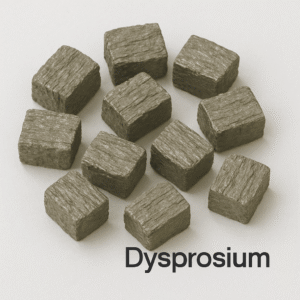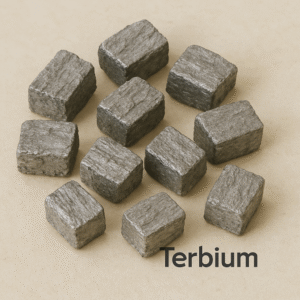Your cart is currently empty!
Lanthanum (La)
Basic Information Element Name: Lanthanum Symbol: La Atomic Number: 57 Atomic Weight: 138.91 Element Category: Lanthanide (first of the rare earth elements) Standard State: Solid Appearance: Silvery-white, soft, and malleable metal Chemical and Physical Properties Density: 6.15 g/cm³ Melting Point: 920 °C (1,688 °F) Boiling Point: 3,464 °C (6,267 °F) Electronegativity (Pauling scale): 1.10 Common Oxidation State: +3 Reactivity: […]
Description
Basic Information
-
Element Name: Lanthanum
-
Symbol: La
-
Atomic Number: 57
-
Atomic Weight: 138.91
-
Element Category: Lanthanide (first of the rare earth elements)
-
Standard State: Solid
-
Appearance: Silvery-white, soft, and malleable metal
Chemical and Physical Properties
-
Density: 6.15 g/cm³
-
Melting Point: 920 °C (1,688 °F)
-
Boiling Point: 3,464 °C (6,267 °F)
-
Electronegativity (Pauling scale): 1.10
-
Common Oxidation State: +3
-
Reactivity: Highly reactive, especially in moist air; forms an oxide layer quickly
Reactivity & Storage
Lanthanum is chemically very reactive. It oxidizes rapidly in air and reacts with water to release hydrogen gas. To prevent degradation, it is usually stored under mineral oil or inert gas. It reacts with most non-metals at elevated temperatures and dissolves easily in dilute acids.
Natural Occurrence & Extraction
Lanthanum is not found in its pure form in nature but occurs mainly in the minerals monazite and bastnäsite, which also contain other rare earth elements. Lanthanum is typically extracted via solvent extraction and ion exchange methods.
Isotopes
Naturally occurring lanthanum consists primarily of two isotopes:
-
La-138 (radioactive, ~0.09%)
-
La-139 (stable, ~99.91%)
Key Applications
1. Nickel-Metal Hydride (NiMH) Batteries
-
Lanthanum is a major component in mischmetal, an alloy used in the negative electrodes of NiMH batteries.
-
Widely used in:
-
Hybrid electric vehicles (HEVs)
-
Rechargeable batteries for tools and electronics
-
2. Optical Glass and Lenses
-
Lanthanum oxide is used to manufacture high refractive index, low-dispersion optical glass.
-
Applied in:
-
Camera lenses
-
Binoculars
-
Telescopes
-
Specialty optics for medical and industrial use
-
3. Steelmaking and Foundry Alloys
-
Lanthanum improves the workability and corrosion resistance of iron, steel, and non-ferrous metals.
-
Functions as a deoxidizer and grain refiner.
4. Catalysis in Oil Refining
-
Lanthanum is used in fluid catalytic cracking (FCC) catalysts to refine crude oil into gasoline and diesel.
-
Enhances catalyst durability and selectivity.
5. Ceramics and Piezoelectric Materials
-
Lanthanum-doped ceramics are used in capacitors, sensors, and actuators.
-
Also improves thermal stability and dielectric performance.
6. Hydrogen Storage Materials
-
Lanthanum-based alloys are used to reversibly absorb hydrogen.
-
Used in fuel cell systems and hydrogen storage tanks.
Interesting Facts
-
Discovered in 1839 by Swedish chemist Carl Gustaf Mosander.
-
The name “Lanthanum” is derived from the Greek word lanthanein, meaning “to lie hidden,” as it was originally hidden within cerium compounds.
-
Lanthanum is often considered the first element of the lanthanide series, despite debates over whether it technically belongs to the d-block or f-block.
-
Plays a crucial role in clean energy technologies, particularly in hybrid and electric vehicle systems.
Additional information
| Weight | 1 lbs |
|---|---|
| Dimensions | 1 × 1 × 1 in |
| Weight | 100G |
-
Cerium (Ce)
$257.00 -
Dysprosium (Dy)
$670.00 -
Erbium (Er)
$174.00 -
Europium (Eu)
$1,550.00 -
Gadolinium (Gd)
$106.00






